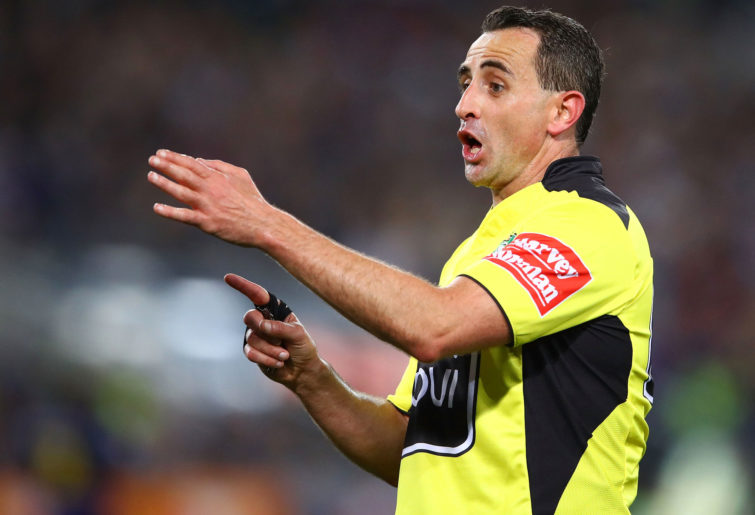NRL Round 7 Team Lists Late Mail: Dolphins get exemption plus Wayne now in doubt, star Rooster out
The Dolphins have again been given permission by the NRL to go outside their top 30 in order to field a team, as coach…
Every weekend around the grounds, whether it’s under-tens or first-grade rugby, you can hear a few common phrases.
You might hear players and spectators screaming to the referee, “Get ‘em onside,” or, “He’s offside, sir”. These calls have always been just another part of watching or playing a game.
To an extent those passing these comments do have a point. The tendency for players in NRL games to creep up in front of the referee in order to gain an advantage by getting off their defensive line and allowing the attacking team less time with the ball is seen in every single NRL game. This can sometimes be seen as applying good defensive pressure or getting up in the opponent’s face.
However, it has come to the stage where it is adversely affecting the quality of attacking play and therefore the overall experience of a spectator watching the game.

(Mark Kolbe/Getty Images)
The NRL laws regarding the ten-metre offside are fairly vague. Section 11(10)(g) of the NRL Laws & Interpretations 2019 states:
All defending players are required to be ‘in line’ with the Referee marking the 10 metres. The Referee will call “go” when the ball is clear of the ruck and then the defensive line is entitled to move forward.
There is no doubt that players are retiring the original ten metres. However, this “clear of the ruck” line seems like quite a grey area. Can players start moving forward when the tackled player has touched the ball with his foot? Or is it when the dummy-half has touched the ball? The timing may seem insignificant; however, think about the value of a tenth of a second to a halfback going for a matchwinning field goal or about the centre with half a second extra to get a pass off to put his winger over in the corner.
The aim of the ten-metre law at a play the ball is to give the attacking team time to reset and run their next play. By not letting the defence rush up early, the attacking plays are becoming overly rushed, decreasing in quality and providing an overall worse experience to those watching the game.
Of course some will say these players rushing up isn’t a problem. It is, after all, good to apply pressure onto attacking players, and we are talking about a high-intensity sport. However, for the sake of the quality of football and the principle of playing by the rules practically, this rule should be enforced properly.
In the recent Tigers vs Roosters game at BankWest Stadium there were only two penalties all game for offside within the ten. However, all game both teams were consistently infringing, and I’m a firm believer that it influenced the quality of the game overall.
Of course the referees are trying to stop blowing so many penalties this year, and I am absolutely in favour of letting the game be free-flowing. However, an infringement is an infringement and should be called. If it’s not, it will manifest into a culture.
We are at a stage where it is a tactic to come off the line early. Coaches have started using this in their game plans as they know the referees don’t call it up. This is clearly a problem and it’s adversely affecting the quality of the attacking play in NRL.
For the sake of my blood pressure and I’m sure that of many others who see the blatant offsides every week, someone please fix this.